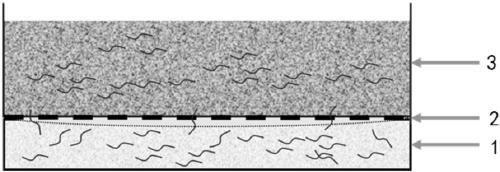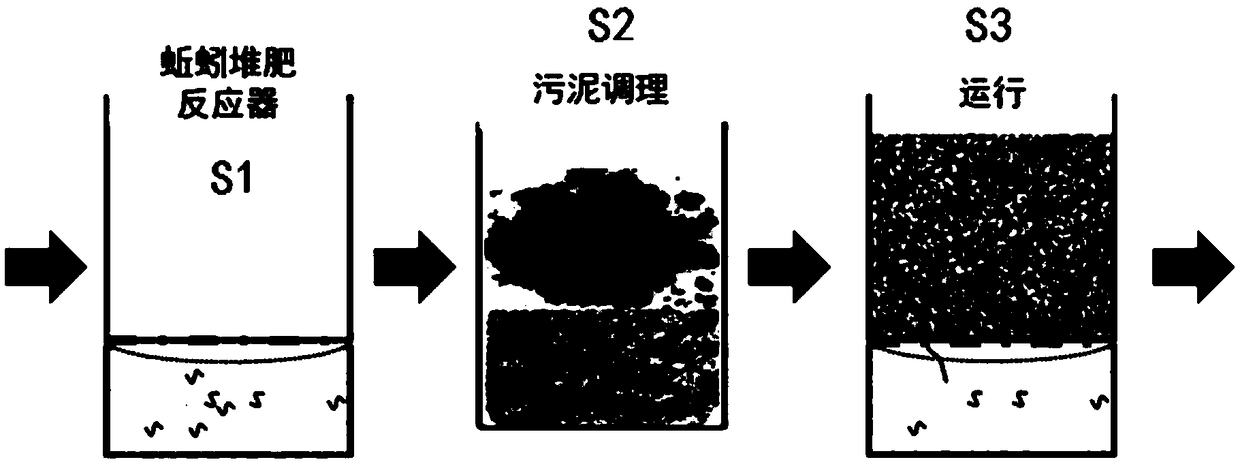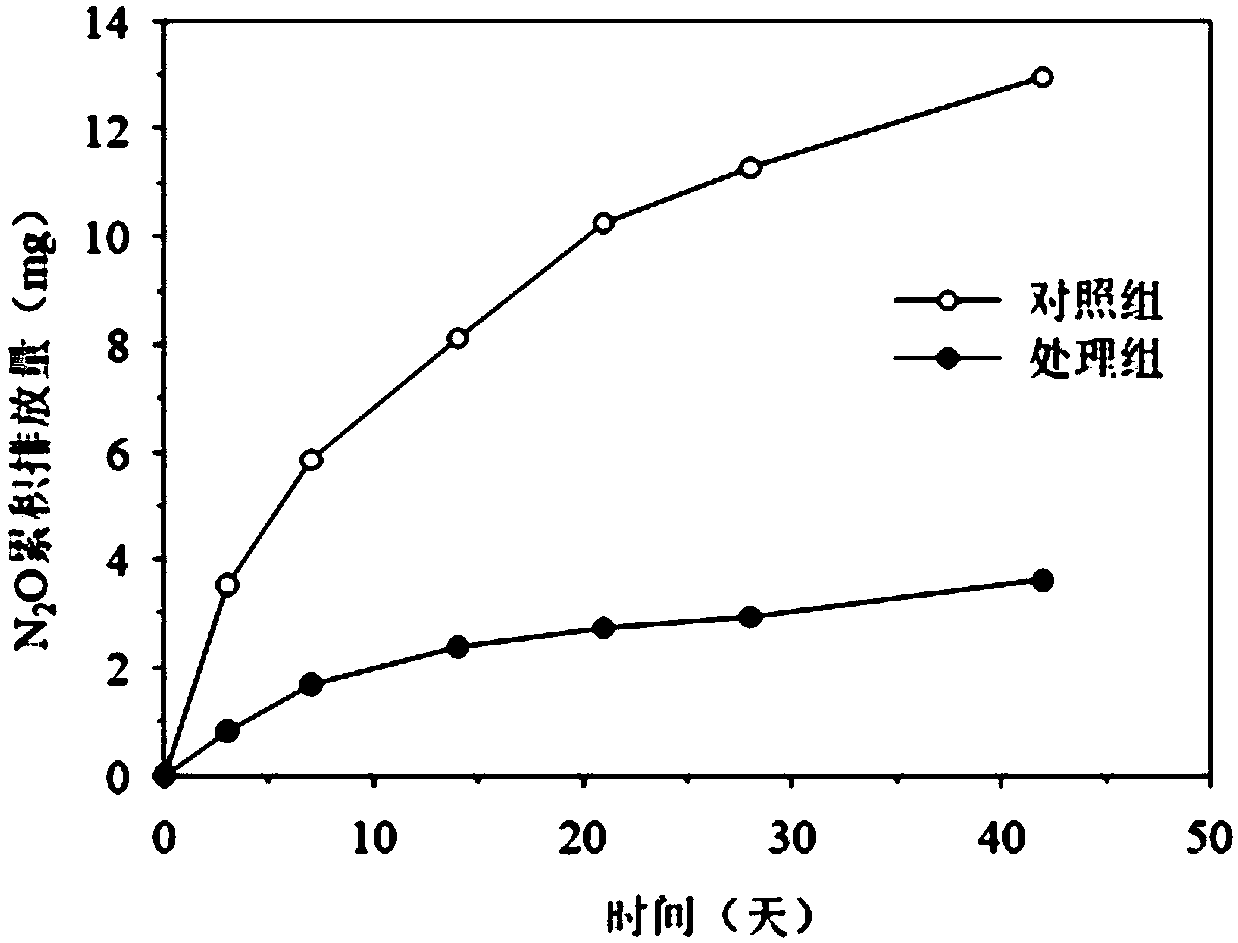Method for reducing emission of potent greenhouse gas N2O in sludge earthworm composting
A technology of greenhouse gases and earthworms, applied in the field of reducing N2O emissions of strong greenhouse gases from sludge earthworm composting, can solve the problems of reduced fertilizer efficiency of compost products, achieve the effects of increasing agricultural value and economic benefits, improving product quality, and strong adaptability
- Summary
- Abstract
- Description
- Claims
- Application Information
AI Technical Summary
Problems solved by technology
Method used
Image
Examples
Embodiment 1
[0048] 1. Set up a buffer layer. The thickness of the buffer layer is about 5cm. It is composed of cow dung, pig manure and other substrates that earthworms like, and its conductivity is lower than 5.0mS / cm. The density of earthworms in the buffer layer is 1.2kg / m 2 .
[0049] 2. An isolation net is set on the buffer layer. The isolation net is made of hard plastic with an aperture of 0.5 cm, which is convenient for earthworms to move up and down.
[0050] 3. Take the remaining sludge after dehydration, add straw, adjust the carbon-nitrogen ratio to 20:1, and the moisture content to 70%. The mixed material should be placed in a cool place for 5 days to deodorize. After there is no obvious ammonia smell, it will be added to the reaction area.
[0051] 4. Add the deodorized sludge material directly to the isolation net with a thickness of 15cm, and cover the rear sunshade net on the top of the reaction zone. After adding materials, stimulated by fresh materials, the earthworm...
Embodiment 2
[0054] 1. Set up a buffer layer. The thickness of the buffer layer is about 5cm. It is composed of chicken, duck, goose droppings and other substrates that earthworms like, and its conductivity is lower than 5.0mS / cm. The density of earthworms in the buffer layer is 2.0kg / m 2 .
[0055] 2. An isolation net is set on the buffer layer. The isolation net is made of hard plastic with an aperture of 0.5 cm, which is convenient for earthworms to move up and down.
[0056] 3. Take the remaining sludge after dehydration, add sawdust, adjust the carbon-nitrogen ratio to 30:1, and the moisture content to 75%. The mixed material should be placed in a cool place for 5 days to deodorize. After there is no obvious ammonia smell, it will be added to the reaction area.
[0057] 4. Add the deodorized sludge material directly to the isolation net with a thickness of 10cm, and cover the rear sunshade net on the top of the reaction zone. After adding materials, stimulated by fresh materials, t...
PUM
| Property | Measurement | Unit |
|---|---|---|
| thickness | aaaaa | aaaaa |
| pore size | aaaaa | aaaaa |
| pore size | aaaaa | aaaaa |
Abstract
Description
Claims
Application Information
 Login to View More
Login to View More - R&D
- Intellectual Property
- Life Sciences
- Materials
- Tech Scout
- Unparalleled Data Quality
- Higher Quality Content
- 60% Fewer Hallucinations
Browse by: Latest US Patents, China's latest patents, Technical Efficacy Thesaurus, Application Domain, Technology Topic, Popular Technical Reports.
© 2025 PatSnap. All rights reserved.Legal|Privacy policy|Modern Slavery Act Transparency Statement|Sitemap|About US| Contact US: help@patsnap.com



